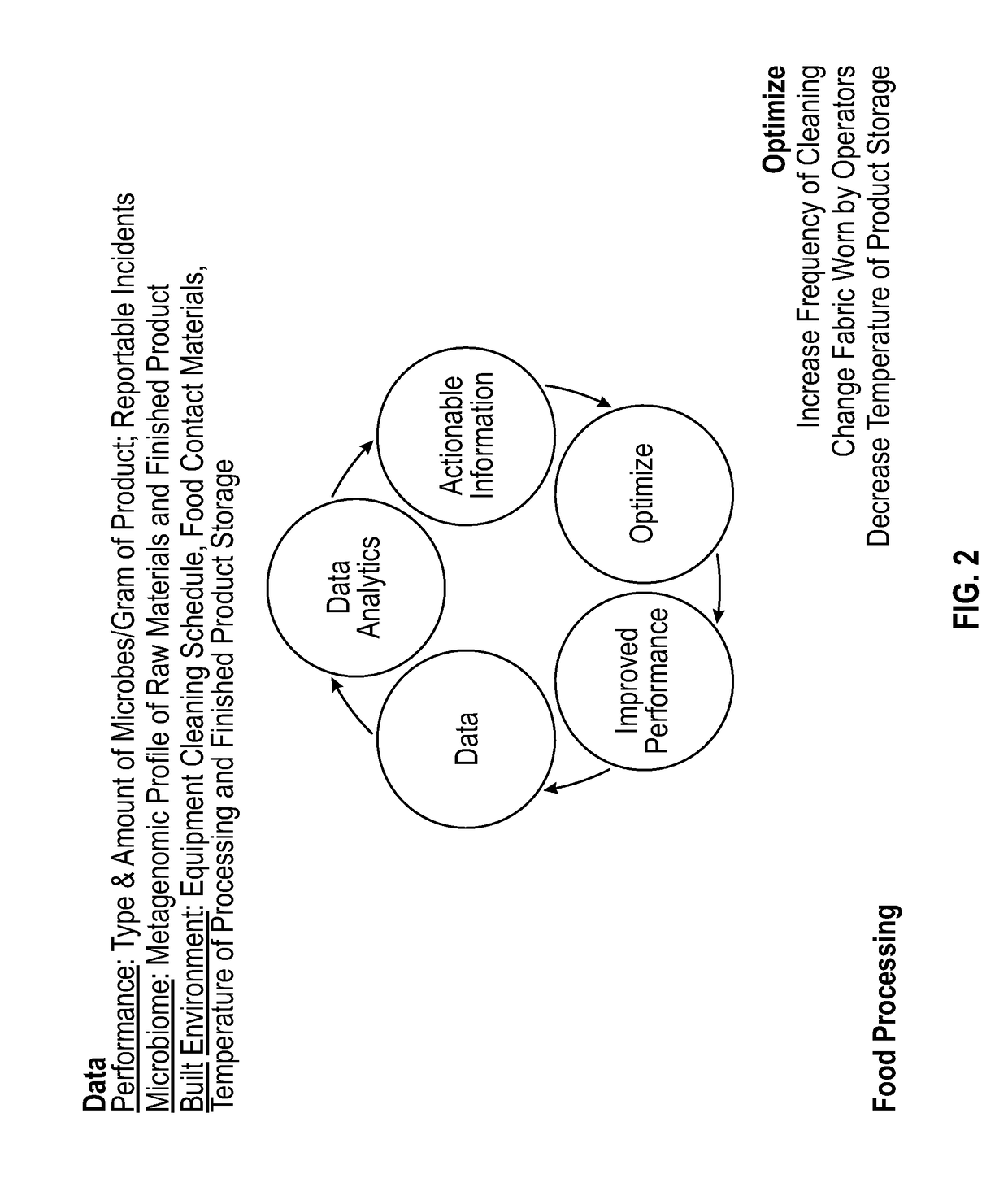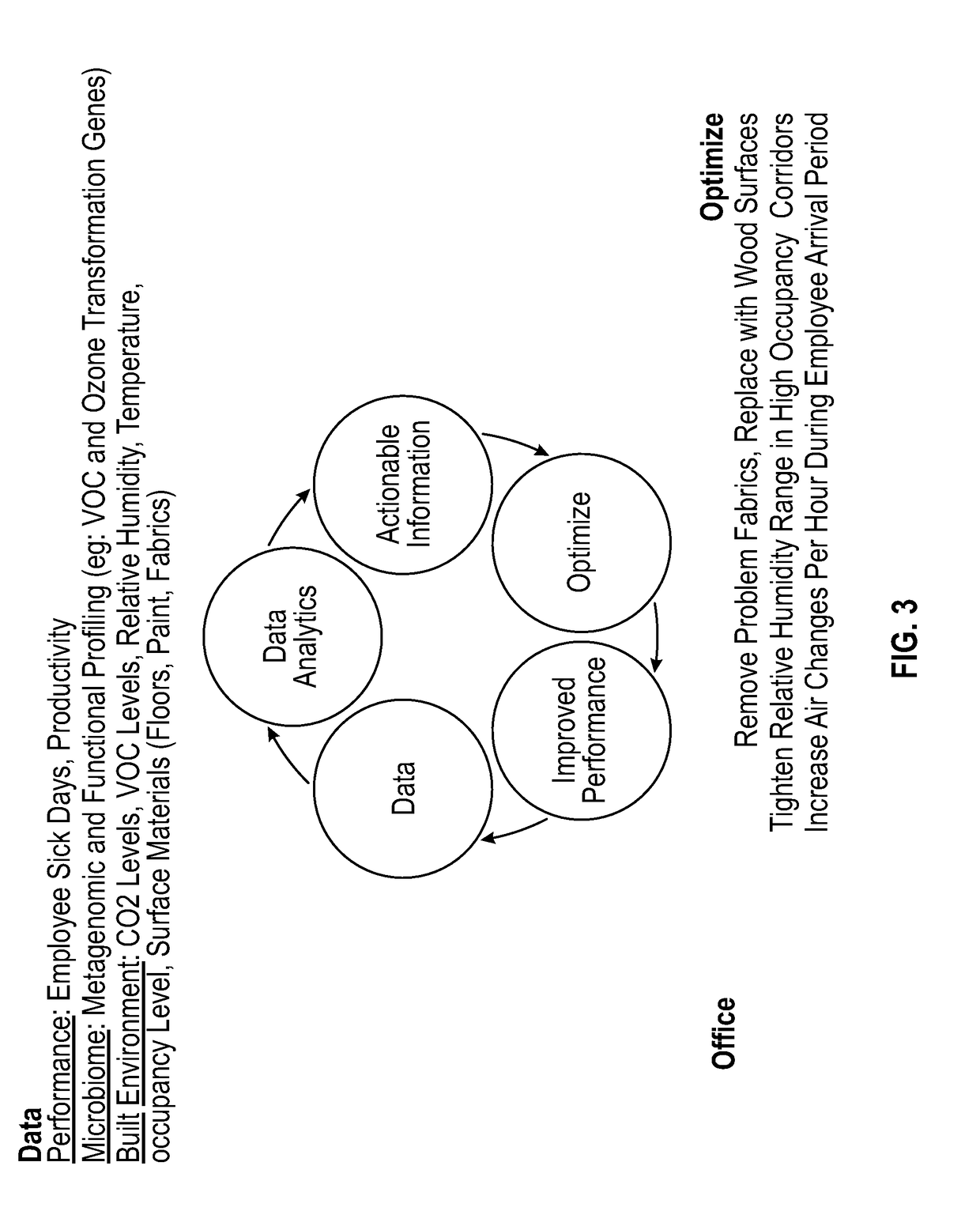Monitoring and managing a facility microbiome
- Summary
- Abstract
- Description
- Claims
- Application Information
AI Technical Summary
Benefits of technology
Problems solved by technology
Method used
Image
Examples
example 1
School
[0166]A study to analyze and adjust the microbiome of a school is performed in accordance with the present invention to improve the BE of the school. An occupied school building is selected to illustrate the influence of various facility parameters on the types and concentrations of airborne microbes (termed “the airborne microbiome”) within the school.
[0167]Active Air Sample Collection
[0168]Active air samples are collected as follows:_1) 10 active vacuum air samples (8 inside and 2 outside) are collected on each floor of the school each day. 2) Each air sample collection is commenced at 8 am and ends at 6 pm, for a total of 10 hours per air sample. 3) Each air sample consists of two 25 mm cellulose ester filters having 1.4 um pore diameter. 4) Air is drawn through each filter using a vacuum pump at a rate of 3 liters per minute, resulting in 1.8 m3 of air being passed through each filter. 5) Each air sample is collected after 6 pm, sealed, and frozen until laboratory processi...
example 2
Hospital
[0186]This example describes practice of the invention in a hospital.
[0187]Samples may be taken from all areas where typical (up to all) patients are located and from different places in those areas, including bedsheets, air, doorknobs, and equipment in rooms. Samples may be also taken from entry points, including carpet in main hallways and from air intake and ventilation system exit points in those areas. Samples may be taken from health care staff-associated items, including surgical gowns, surgery instruments, catheters, and doctors' and nurses' hands. Samples may be collected and analyzed on a weekly basis (in other examples, other sample frequencies are employed).
[0188]During the sampling period, readings are collected from sensors at various locations throughout the building measuring one or more of the following: temperature, air flow, and relative humidity are recorded, as are other HVAC parameters, for the hospital. In addition, the type, frequency, and location of...
example 3
Meat Processing Facility
[0192]In this example, a complex of 12 poultry processing facilities, including 3 that have consistently higher Salmonella counts per kilo of processed product leaving facility, is the subject of, location for, the practice of the invention.
[0193]Sampling occurs at various locations in each facility (walls, carpet, entries, and exits) and at any or all of various surfaces (including equipment that handles or otherwise is in contact with the meat). HVAC data for each facility is recorded over the sampling period, and a correlation of the building parameters in the top 25% of facilities with best performance (lowest Salmonella burden) and the bottom 25% of facilities (with worst performance) is made.
[0194]The correlation demonstrates that, for example, even though temperature is set at certain range for all facilities as a standard operating procedure, the relative humidity is higher in the worse performing facilities (i.e., because location is near a body of w...
PUM
| Property | Measurement | Unit |
|---|---|---|
| Time | aaaaa | aaaaa |
| Electrical resistance | aaaaa | aaaaa |
| Biological properties | aaaaa | aaaaa |
Abstract
Description
Claims
Application Information
 Login to View More
Login to View More - R&D
- Intellectual Property
- Life Sciences
- Materials
- Tech Scout
- Unparalleled Data Quality
- Higher Quality Content
- 60% Fewer Hallucinations
Browse by: Latest US Patents, China's latest patents, Technical Efficacy Thesaurus, Application Domain, Technology Topic, Popular Technical Reports.
© 2025 PatSnap. All rights reserved.Legal|Privacy policy|Modern Slavery Act Transparency Statement|Sitemap|About US| Contact US: help@patsnap.com



